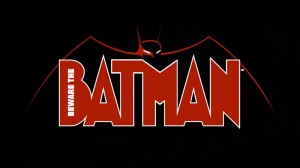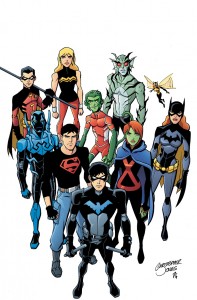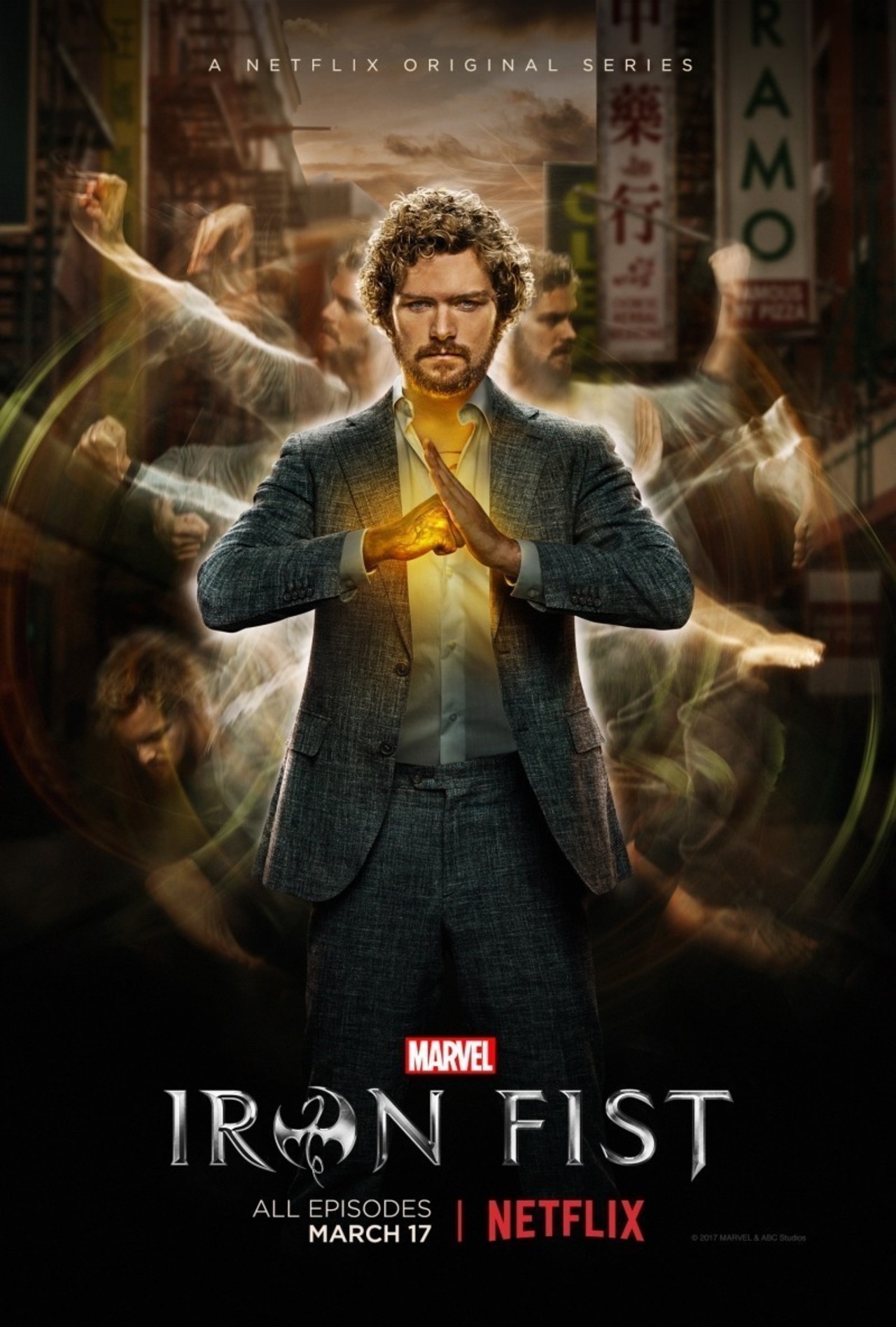 Top 10: Action Series Canceled by Cartoon Network by Jerry Whitworth
Top 10: Action Series Canceled by Cartoon Network by Jerry Whitworth
With the exit of Stu Snyder, manager of Cartoon Network, fans can’t help but reflect on negative advents during his seven year run at the channel. Most notable for his desire to move toward live action and reality series he championed at CN (a focus that lost the company creator Craig McCracken of The Powerpuff Girls and Foster’s Home for Imaginary Friends), Snyder is also remembered for the cancellation of fan favorite animation block Toonami in 2008. Between mismanagement by the network in the last few years and basing series’ success on toy sales, Cartoon Network has stacked up an impressive record of canceled series, including those critically-acclaimed and cult followed. In fact, CN had lost so much of the faith of its viewers from its mismanagement, for some years the ratings threatened to kill the network. Only in recent years, with series like Adventure Time and Regular Show (not to mention DVD sales of generally cheaply produced [adult swim] series), has it managed to recoup losses (amidst major competition from Nickelodeon, The Hub, and Disney XD). Along the way, a number of shows have come and gone by the hand of the powers that be at CN that fans felt were either taken too soon or believed there was still stories left to be told. Lets examine some of the series fans have demanded the return of on the network over the years.
 10. BEWARE THE BATMAN
10. BEWARE THE BATMAN
A recent tactic of Cartoon Network is to remove shows from its schedule and offer no word of its future. Seen as a passive-aggressive cancellation by fans, creators and viewers are left in Limbo as to the final word on shows as the former move on to other work and latter form campaigns to show interest remains in abandoned properties. Beware the Batman is one of the more recent victims to the practice, though at this point fans have largely lost hope in being able to save shows anymore regardless of what steps they take (watching reruns, buying merchandise, letter and e-mail writing campaigns, etc). A return to the dark and brooding Batman, Beware the Batman features a young Dark Knight operating in Gotham picking up during the advent of the supervillain. Showrunners wanted to feature some of the character’s more obscure enemies, employing the likes of Professor Pyg, Magpie, Anarky, Silver Monkey, Humpty Dumpty, and Lady Shiva, but would also introduce Ra’s al Ghul and his League of Assassins. For unknown reasons, CN would pull the show off the air eleven episodes into the first season and only recently announced to finish airing the series on its Toonami block.
 9. HE-MAN AND THE MASTERS OF THE UNIVERSE (2002)
9. HE-MAN AND THE MASTERS OF THE UNIVERSE (2002)
In the 1980s, Masters of the Universe was one of the hottest toylines in the history of the action figure. Its developer Mattel had a desire to renew interest in the property and developed a new line returning to the roots of the series. To promote the toys, they had an animated series commissioned and aired on Cartoon Network’s Toonami programming block. He-Man and the Masters of the Universe returned He-Man to the planet Eternia rebooting its story, paying homage to the old Filmation series, but updating the material with much more action (including showing characters actually fighting each other) and adding character development by focusing the story on the denizens of the world. The series and toyline both proved popular with fans but mismanagement by both Mattel and CN was fatal to the brand. For the former, Mattel choked the market with variants of He-Man and Skeletor while other characters consumers actively sought became increasingly difficult to find. CN, as it has had a history of doing, moved the series on the line-up leading viewers having to find the show which hurt ratings. The series would be canceled halfway into its second season.
 8. THUNDERCATS (2011)
8. THUNDERCATS (2011)
Another extremely strong brand during the 1980s, ThunderCats was acquired by Warner Bros. from Rankin/Bass Productions some years ago. The franchise would be developed into a new animated series by Warner with accompanying toyline by Japanese company Bandai. The original series featured a handful of feline survivors of the planet Thundera who land on the planet Third Earth. Therein, their presence awakens an ancient evil in Mumm-Ra the Ever-Living who recruits mutants from the planet Plun-Darr who followed the Thunderans and became marooned on the planet. The world became a crossroads for various alien beings as the Thunderans, or ThunderCats as they referred to themselves, unravel the mysteries and past of their new home. For the franchise’s reboot, the series took a rather dramatic leap from the source material incorporating characters and names from the original but rather drastically uprooted the mythology. Observed as a much darker interpretation, the new show featured the kingdom of Thundera annihilated from the shadows by the malevolent Mumm-Ra leaving the surviving ThunderCats to explore Third Earth searching for stones that would provide the power necessary to defeat their foe. When the series premiered, its ratings did extremely well. However, these ratings went significantly downhill as time passed. Worse, sales of the toyline were rather bad. Fans of the original series felt the reboot rather poorly handled the source material as it appeared children saw the show as either too cerebral or dark (both hurting toy sales). With the older and younger audience both turned off by the series, it appeared the viewers caught in the middle weren’t strong enough to maintain the show. Another passive-aggressive cancellation, the show was simply not picked up following the end of the first season as show creators moved on with different work.
 7. SYM-BIONIC TITAN
7. SYM-BIONIC TITAN
Developed by Genndy Tartakovsky of Dexter’s Laboratory and Samurai Jack fame, Sym-Bionic Titan tells the story of two aliens and their robot fleeing the war-torn world of Galaluna to Earth. However, their enemy General Modula sends his hordes of beasts and monsters after them. Fortunately, the trio are able to form the giant robot Sym-Bionic Titan to protect themselves (and their new home). Combining a recipe of action and humor made to appeal to virtually every age group the series is likely to attract, the show provided competitive ratings against other action series at the time. However, it had one significant flaw: no toyline tie-in. No toy company would pick up the license to produce toys for the series which in this day-and-age is virtually necessary for an action animated series to remain on air. Regardless of the show’s content or passion of its audience, the series was felled because it wasn’t a glorified toy commercial (and CN lacked conviction to keep the show running in hopes a toyline would emerge later). Likely telling of its fate, Tartakovsky moved on to work on Sony’s film Hotel Transylvania as the series’ first season wrapped where no news emerged of a second season (another passive-aggressive cancellation).
 6. THE SECRET SATURDAYS
6. THE SECRET SATURDAYS
Inspired by classic Hanna-Barbera shows like Jonny Quest and The Herculoids, The Secret Saturdays was a series picked up by Cartoon Network to capitalize on the success of its hit Ben 10 (aimed at the same demographic and even placed in the same universe). This series followed the adventures of the Saturday family, a group of scientists and adventurers that protect mankind from threats believed to be of myth and folktales. They’re aided in this by cryptids, or rare creatures the general public don’t believe exist. Zak Saturday, son of Doc and Drew Saturday, wields the Hand of Tsul ‘Kalu (or, the Claw), which amplifies his ability to psychically bond with (or even control) cryptids. Unfortunately, Secret Saturdays would be another series mismanaged by CN, placed on hiatus when it was building momentum (a fairly common practice by the network) and then moved on the schedule forcing fans to have to look for it. Add in the accompanying toyline emerging around the time CN moved the show on the schedule and the series’ fate was all but sealed.
 5. BATMAN: THE BRAVE AND THE BOLD
5. BATMAN: THE BRAVE AND THE BOLD
While films and comics featuring Batman focused on the angst and darkness of the character, someone came up with the idea of having an animated series using his more whimsical concepts (like that from the Silver Age and 1960s live action TV series). Further, he would team with different heroes like in the comic book series The Brave and the Bold (a major boon for toy manufacturers, to be sure). So was born Batman: The Brave and the Bold featuring a barrel-chested Batman inspired by Dick Sprang teaming with the likes of Aquaman, Green Arrow, Plastic Man, and Blue Beetle against foes like Clock King, Gorilla Grodd, and Black Manta. The series took Batman in directions the character hadn’t seen in quite some time, such as with the reality-warping Bat-Mite, the singing and dancing of the Music Meister, and battling Despero alongside the Green Lantern Corps in space. While many creators have shunned campier aspects of the Dark Knight mythos, Batman: TB&TB seemed to embrace the entirety of its history. The series ran the gamut from Batman coming face to face with Joe Chill, the murderer of his parents, in “Chill of the Night!” to Dick Grayson and Damian Wayne inheriting the mantle of Batman and Robin in “The Knights of Tomorrow!” The show would run for three seasons, reportedly dropped to return to more closely portraying the Batman featured in the films giving way to Beware the Batman.
 4. SAMURAI JACK
4. SAMURAI JACK
From the mind of Genndy Tartakovsky of Dexter’s Laboratory fame, Samurai Jack tells the story of a nameless samurai displaced in the future and his battle against evil personified in Aku. It’s challenging to describe Samurai Jack. Simply put, it’s a work of art. The design of the world is both sublime and complex and the story mirrors this idea. The series draws from a world’s mythology and art (including pop culture) that engaged adults but at its core told a story understandable (and enjoyable) by young people. Just some of its inspiration was drawn from ukiyo-e paintings, Akira Kurosawa (Seven Samurai, Yojimbo), Frank Miller (300, Ronin), Star Wars, Lone Wolf and Cub, Thundarr the Barbarian, Kung Fu, and Hayao Miyazaki (My Neighbor Totoro, Castle in the Sky) while employing elements from Greek, Norse, Egyptian, and Hindu mythologies. The achievements of Samurai Jack was surely recognized by its peers gaining eleven awards including four Emmys. Later acclaimed works like Kung Fu Panda and Avatar: The Last Airbender would draw inspiration from the television series. Samurai Jack would last four seasons and was suppose to be followed by a feature film until Cartoon Network’s The Powerpuff Girls Movie flopped at box office. With the film canceled, Tartakovsky moved on to other projects but has always planned to finish this unresolved work. A comic book series based on the franchise is currently produced by IDW Publishing.
 3. JUSTICE LEAGUE UNLIMITED
3. JUSTICE LEAGUE UNLIMITED
Considered the pinnacle of animated series based on DC Comics, Justice League Unlimited was the culmination of such series as Batman: The Animated Series, Superman: The Animated Series, and Justice League (as well as accompanying series like Batman Beyond and Static Shock). Featuring a veritable army of superheroes with dozens of members added to the Justice League, JLU saw the prominence of the superhero expand towards Earth’s defense. Meanwhile, the final season saw the villainous Grodd assemble a similar force of supervillains to oppose them (however, a power struggle would surface following the recruitment of Lex Luthor leading to an internal conflict between the two alpha villains). Within the legion of villains, Grodd was assembling tools necessary to turn humanity into apes (a fact unknown to his cohorts) while Luthor sought to resurrect Brainiac (unaware the entity was in fact inside of him) which composed the brunt of the season. JLU would run for three seasons before mismanagement by Cartoon Network moving the show on the schedule killed the ratings and canceled the series. The show would spawn a toyline that long outlived the series, going for five years after its end on television. Fans have debated if it was JLU‘s time to end, wrapping up major storylines in the final episodes of the series. However, considering the comic book based on the series continued for two years after its finale, it’s likely there would have been more ground to cover.
 2. MEGAS XLR
2. MEGAS XLR
Telling the story of a boy and his giant robot, Megas XLR was a love letter to geeks of all kinds. Hitting on references to comic books, anime, pro wrestling, cartoons, video games, tokusatsu, science fiction, and so much more in a huge mixed bag for fans, the show became a series on Cartoon Network after its pilot was voted on by viewers to become the channel’s next Cartoon Cartoon. The result was two cult-followed seasons of the show that featured voice actors from the English dubbed Cowboy Bebop (the creators being huge fans of the show), Bruce Campbell as a MODOK pastiche, and Peter Cullen and Frank Welker reprising their roles as homages to Optimus Prime and Megatron of Transformers. The decision to cancel Megas came directly for administrative reasons as Cartoon Network had Ben 10 and Teen Titans on the schedule and didn’t want to continue producing a third show that touched on the same basic demographic in house (albeit Megas also brought in the older demo, which wasn’t viewed positively back then). Ironically, Teen Titans would be canceled the following year.
 1. YOUNG JUSTICE
1. YOUNG JUSTICE
Greg Weisman, the mind behind Disney’s cult-followed Gargoyles, was given the reins to Marvel’s animated series Spectacular Spider-Man only for the show to be killed when Disney purchased Marvel (wanting as many projects as possible done in house rather than licensed elsewhere). Sam Register, Executive Vice President of Creative Affairs of Warner Bros. Animation, saw an opportunity to snag the creator before another company hired him and teamed the writer with Brandon Vietti. Their job was to produce a series based on the young heroes of DC Comics resulting in Young Justice. What they made was an entire fully-realized world with complex, feeling characters that happen to have super powers. The show formed a fervent fan base as the story branched out to canonical comic books and a video game. Young Justice was one of a handful of series that pulled Cartoon Network out of its ratings slump it fell into over years of mismanagement, forming as the crown jewel of a new programming block called DC Nation with new series Green Lantern: The Animated Series. However, this didn’t stop CN from mismanaging the series, exposing it to repeated hiatuses without given reason killing its ratings. Coupled with toy sales under performing, the series ended after two seasons (with a finale setting up a third season that likely would have brought the series full circle).





Green Lantern TAS should have replaced JLU, the creators of that show were well past being down with that show. GLTAS on the other hand, was canceled well before it’s time. Still, at least this makes me feel better: http://www.ign.com/articles/2014/04/16/green-lantern-the-animated-series-producer-made-a-comic-explaining-animation-focus-groups?utm_campaign=fbposts&utm_source=facebook
agreed
Why isn’t GLTAS on the list, it was worth WAY more than just an “Honorable Mention”, heck, it was better than Young Justice with the way it handled storytelling and character development. >:/
megas xlr should be #1
Megas XLR will keep rock on forever!!!
Seriously? No Teen Titans?
batman the brave and the bold sucked a lot, they others were great
btw, constructive criticism, the font sucks, it barely distinguish from the background
where is dragon ball z ya
It wasnt canceled. It was completed years prior to airing on the network. And has had complete runs several times
Wheres Teen Titans?!
Beware the Batman deserved cancellation because it did poorly and is another attempt at overusing Batman with s**t villains in place of good ones such as Joker and Penguin. Green Lantern The Animated Series deserved that spot.
Hey dragon ball dragon ball z teen titans batman beyond and many many more
Personally, I believe there were other shows produced by Carton Network that deserved another chance. I do believe that some shows were cancelled too early, though. Green Lantern: The Animated Series and Young Justice are probably the strongest contenders, but there are some other highly underrated shows that deserve some love, too. For example: Scooby Doo Mystery Incorporated. I know, I know- it did finish up its plot line with the Nairobi Entity, but aside from, maybe Scooby Doo and the 13 Ghosts, it was one of the few Scooby Doo shows that featured a complex, overarching plotiline and some serious character development, I mean, just look at Fred! Honestly, if the show was given a few more seasons, it could probably have incorporated even more intriguing plot lines and, if classic Scooby fans are vocal enough, it could have branched out into more classic storytelling, even if its quality would be at risk of waning as a result. But I did’t come to discuss Mystery Inc, out of all the cancelled Cartoon Network shows, i believe Detentionaire was one of the most disappointing ones. Detentionaire could have easily become one of those generic romance-driven shows with a ‘wacky’ protagonist usurping authority at every turn, instead we got a complex story-line and some serious character developments. The popular kids weren’t just your classic ‘alpha jerk’s, instead we had characters like Brandy and Kimmie who liked pink and fashion and could still kick butt! We got characters like Holger, who were ridiculous and over the top: comic relief, but still an important part of the show. The most obvious example of the show breaking classic high school stereotypes would have to be Biffy: the hacker bully who has a soft spot for sweets, kittens and knitting. Detentionaire had a mostly original plot line and actual continuity! It was storytelling at its peak and could compete with Young Justice season 2 in its back-to-back episode reveals. Detentionaire was a high school show, but it was also a conspiracy thriller with decent action that still managed to balance the classic romance plot line without seeming dredged out or annoying (something that the first half of Mystery Inc’s first season was guilty of). Even the love interests were made out to be more than just the two girls the protagonist likes. Both Jenny and Tina were portrayed as smart and capable women who actually solved many of the main mysteries of the third and forth season before the protagonist did, and proved themselves more than helpful time and time again. Had Detentionaire been given more seasons, it could have given more tertiary characters development, like the Outcasts, and wrapped up all the tantalizing secrets and mysteries. So was the loss of Justice League Unlimted devastating? Yes.Do I still rue the day that Young Justice and Green Lantern: TAS were cancelled? Of course! But there are other shows: such as Detentionaire, which were also really, really, good , but faded into obscurity as they were overshadowed by comic book shows and simply cast aside. While Detentionaire ran longer than most of the shows on the list, it had just as much potential for future storylines as all of them